As full-time travelers, every single day we have to sort out where we are going to sleep, or more accurately, where we are going to park the van that we are going to be sleeping in.
On one hand, we’re looking to avoid spending money to park overnight; less spending on overnights equals more money for adventuring.
However, when you pay to park in a campground, you are definitely allowed to be there. You can throw your windows and doors open with abandon, and don’t have to pretend you’re not in the van. You might even get showers and a water refill station, too.
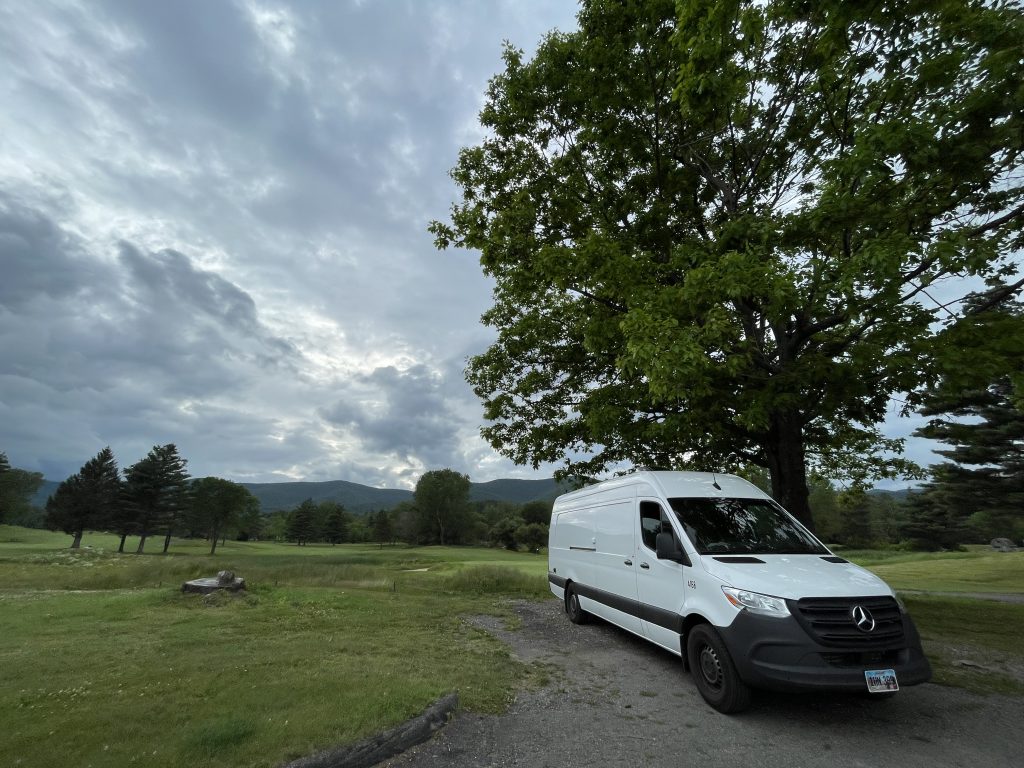
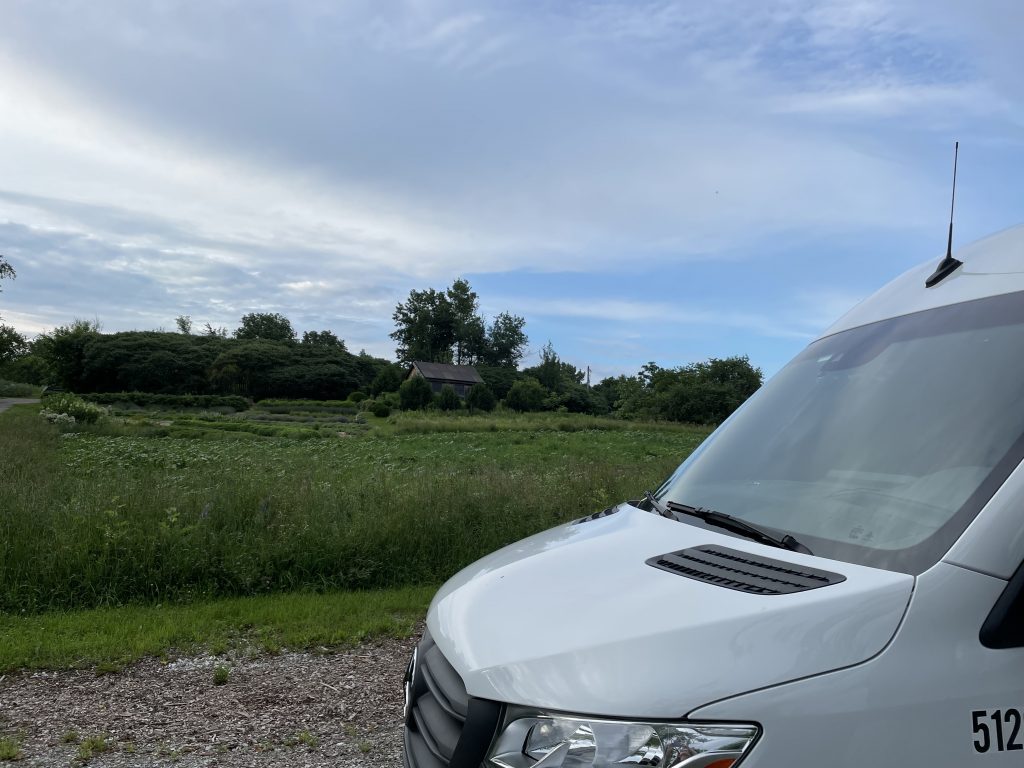
When you try to be stealthy or “less legal”, you definitely save money, but you’re working hard not to draw attention to yourself so there is no opening of the doors or coming and going once you’re parked up. This is the reason we have a van (and not an RV or camper van) — so that we can be stealthy when needed.
When we’re looking to be discreet or stealthy, we are usually staying in spots where it is allowable to park overnight, though perhaps not technically allowable to be in the vehicle. However, as long as there are no signs prohibiting camping, for instance, we say it’s legit. I spend a lot of time of Google Street View reading parking lot signs.
For this type of overnight stay, we will generally pull in late in the evening when we’re ready for bed, and leave first thing in the morning. Examples of this are:
*Park-n-rides/commuter lots. You’d be surprised how many of them have utility vehicles parked for the night, which of course we slide right in next to.
*Rest Areas, Welcome Centers, Truck Stops. These can be a little noisy.
*Street Parking. Most towns have at least one neighborhood with a high concentration of people and not enough assigned parking, like townhouses, apartments, or just smaller lots. Often residents are parking on the street. As long as there are no signs that say the parking is for residents only, we’ll look for a spot where would not be obviously parking in front of one house.

*Parking lots for buses, trains, and airports. Obviously people using these places sometimes need to leave a car overnight.
*Trailheads where people are allowed to camp and backpack .
*24-hour businesses, like groceries, gyms, or laundromats.
Another category of overnight is “permissible but not desirable” parking lots, such as at Wal-Mart, Cabela’s, or Cracker Barrel. These stores generally welcome overnighters, though city ordinances mean you need to check first. Honestly, this is literally sleeping in a parking out outside a store with people coming and going around you. It’s not high on our list but is nice in a pinch.
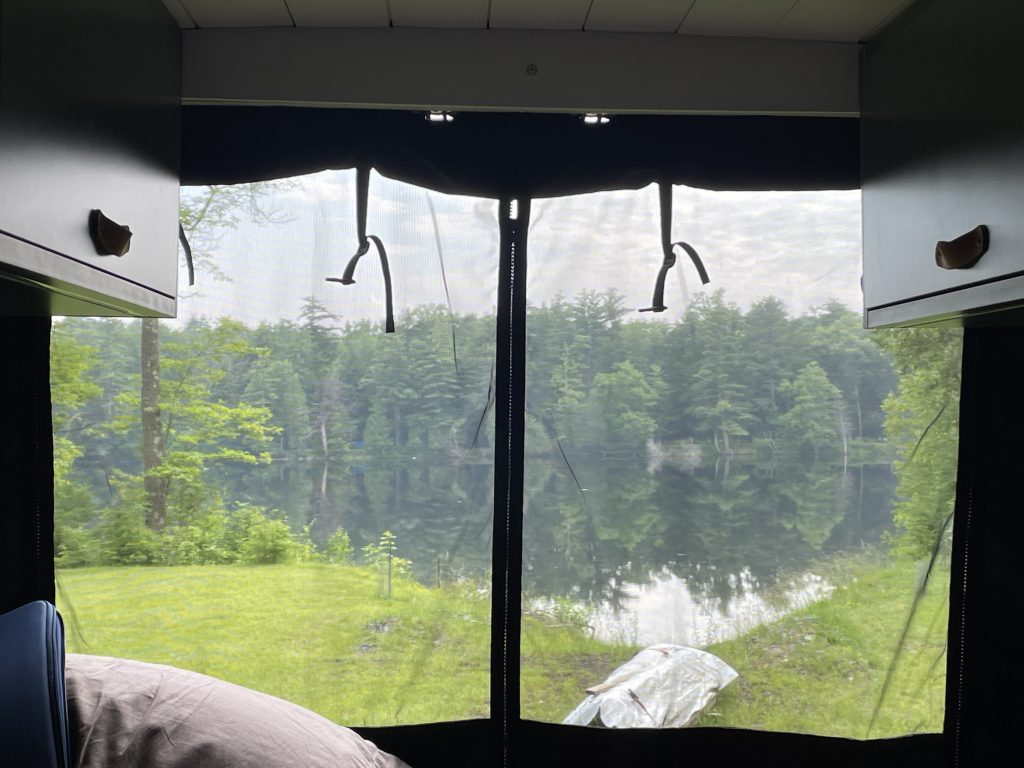

There are several websites that help you find the above type of spots, but I’ve found iOverlander to be the most useful. However, there are large geographic areas with no suggestions, so it only helps so far. We do add spots that we discover.
Of course we can always pay to park at a campground, but that can get expensive quite quickly. We’ve discovered a very wide range in pricing at state campgrounds, and private campgrounds are generally very expensive. The upside is that there are showers, fire pits, picnic tables, wooded lots, and water refill stations, so they’re definitely nice once in a while. We’ve found state campgrounds agreeable to parking our van at a tent spot without pitching a tent, but we do have a “decoy” tent if we need to pretend we’re really camping.
The most interesting overnights we have experienced are through a program called Harvest Hosts. The annual membership is $169 (it’s easy to find discounts for the first year) which includes the following two programs.
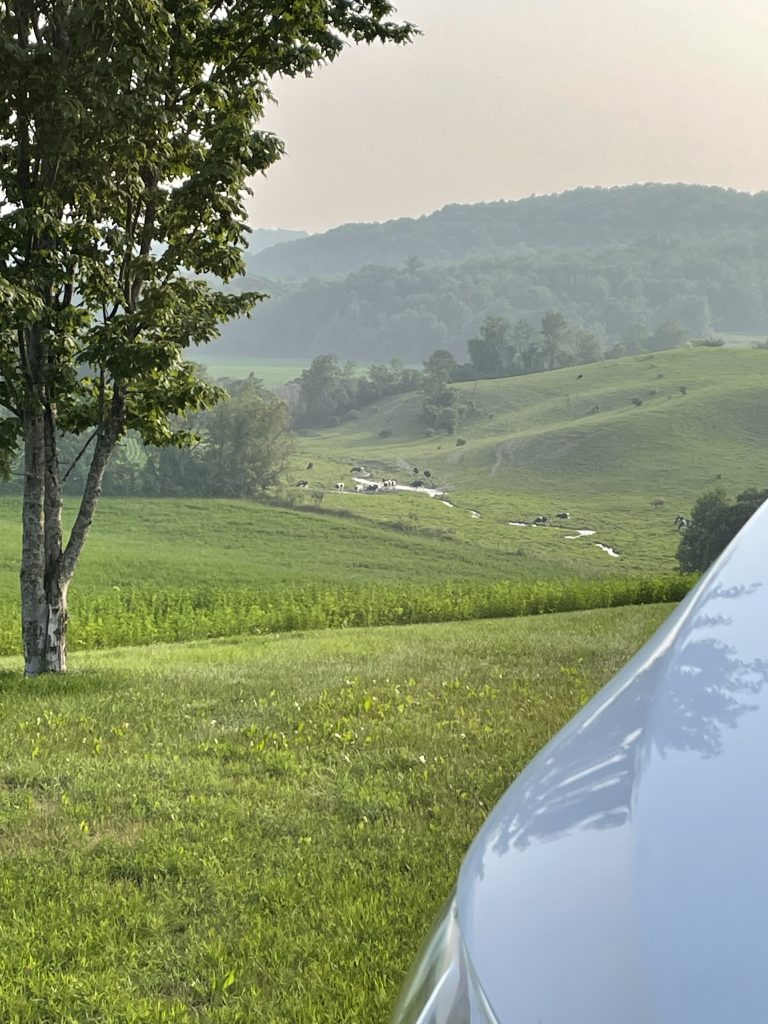
- Boondockers Welcome is a program for people who enjoy the RV/traveling lifestyle (often RV’ers themselves) who have opened their yards or driveways to other travelers at no cost. You request a chosen night in advance, and literally get a free spot to park for the night outside of someone’s house. If you use water or electric you are expected to pay a small amount set by the host.
- The Harvest Host side of the program is for businesses that allow RV’ers to park in their lot overnight. The expectation is that you will spend around $30 with the business. Wineries, breweries, museums, farms, golf clubs, and churches are just a few of the types of businesses that we’ve stayed at. The suggested spend was initially $20, which was super, but the recent jump to $30 has us more on the fence. It’s one thing to stay at a farmstand where we can buy things to eat, but staying at a church is literally just making a donation, and one farm we stayed at too early for their crop so all they had for sale was t-shirts we didn’t want. These stays do not come with facilities (bathrooms/showers/water).
We’ve had some really lovely stays through these programs: on a pond with a barred owl hooting as the sun set; in wooded lots with no light pollution and lots of lightning bugs; on a mountainside watching a lightning storm. A winery in particular was really lovely, especially my memory of sitting next to the vineyard as the sun set with Mr. K on one side and Doug on the other. We’ve also met some really nice and interesting people.
The downside to this program is that you need to do advance planning in order to reserve spots, and once it’s reserved, your schedule is no longer flexible; some hosts want requests several days in advance.
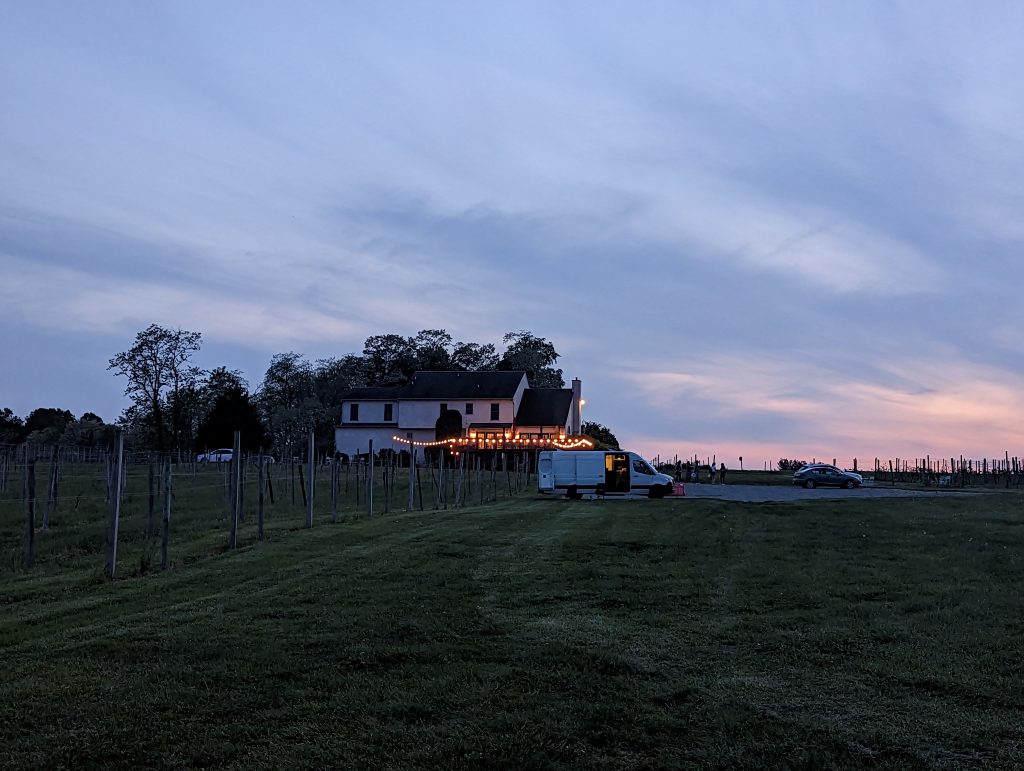
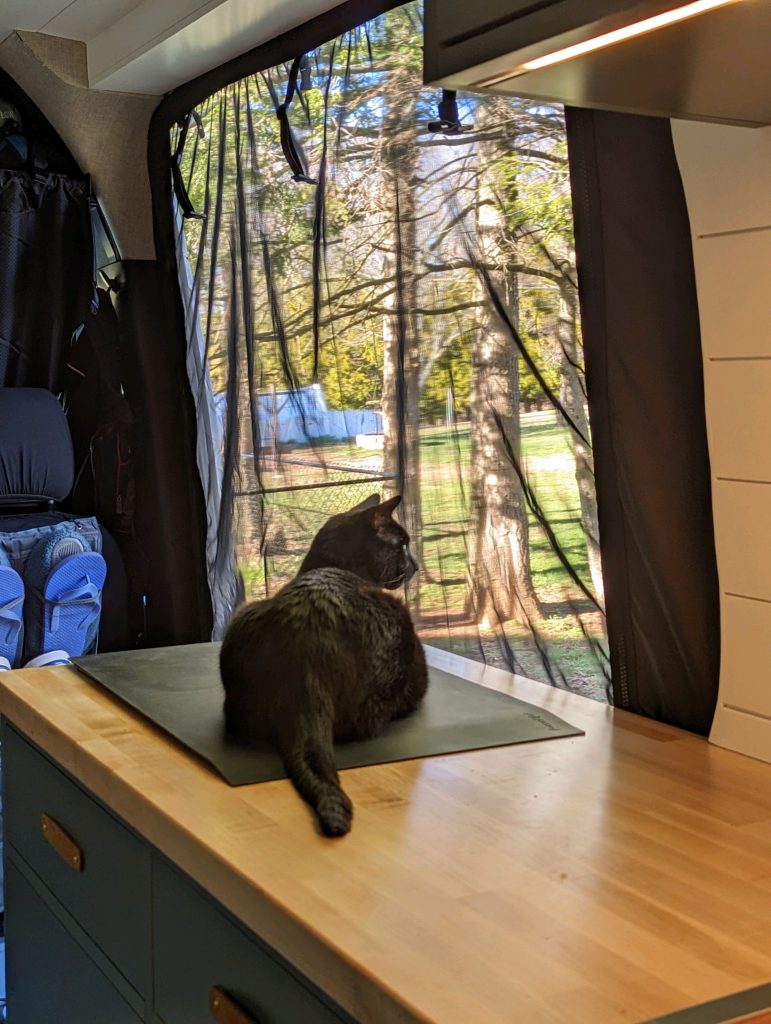
One thing we have yet to experience but which we are really looking forward to are National Forests and Bureau of Land Management locations. These are extremely rare on the Eastern half of the United States, but as we move West we hope to be able to use them for free “dispersed camping” spots. This is a prime reason why we made the van to be “self-sufficient” with solar and no black-water tank.
There are camping discount programs that so far we’ve not been tempted by, but those are on our radar, too. If you’re aware of any interesting programs, let us know!
So far in our few months of travel we’ve spent $200 on camping or parking spots; $500 for purchases at Harvest Host locations (beer, meals, beer, groceries, beer, etc.); and $60 in donations for Harvest Host locations without items to purchase. When you consider that many of these expenses are for items that we would have bought anyway, it’s quite a bargain. I’m curious to see how this changes as we get more experience!
Of course, the best way to save money is to dust off the address book and look up anyone who has remotely been nice to you in your life and see if they would like a van in their driveway for a night or two. Wouldn’t you like to be our friend? Drop us a line!





I was going to tell you about the BLM locations. One of our hiking friends uses them all the time. He lives in CO (now) but is always traveling. Always welcome in our drive way.
Pink Panther aka Mary
We’re really looking forward to the BLM locations! And our friend’s driveways, too!
We’re surrounded by hundreds of square miles of National Forest and BLM and have a garage bay with a 10′ door.
You’re on our map! We just gotta get out there!